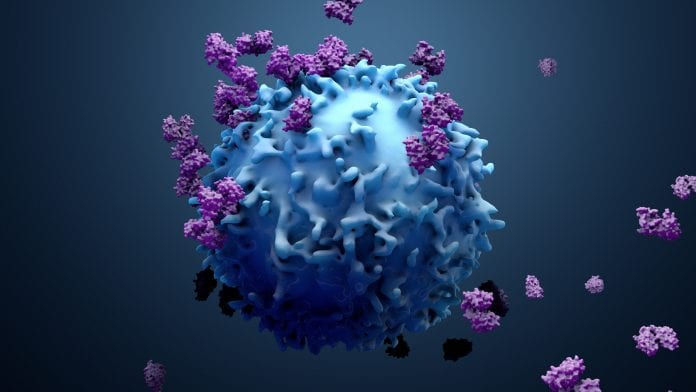
Researchers have used an Artificial Intelligence (AI) model to predict which key of the immune system opens the locks of coronavirus, to understand the role of the immune system in the development of autoimmune disorders, and why some cancer patients benefit from new drugs and others do not.
The immune system is the most accurate patient record system that carries a history of all pathogens that any individual has had to fight, however, accessing this information from patient samples is extremely difficult. Researchers at Aalto University and the University of Helsinki have utilised an AI model to help understand how the intensity of the immune defence reaction relates to its target in different disease states.
The findings have been published in PLOS Computational Biology.
B cells and T cells
The immune defence can recall pathogens it has encountered in the past, a process on which the effectiveness of vaccines is based. This learning immune system can be roughly divided into two parts; B cells are responsible for producing antibodies against pathogens, and T cells are responsible for destroying their targets.
Satu Mustjoki, Professor of Translational Hematology, said: “Although it is known that the role of T cells in the defence response against for example viruses and cancer is essential, identifying the targets of T cells has been difficult despite extensive research.”
T cells identify their targets in a ‘key and a lock’ principle whereby the lock is the T cell receptor on the surface of the T cell, and the key is the protein presented on the surface of an infected cell.
Using AI to understand immune defence
The researchers who carried out this study have previously studied profiled key-lock pairs, enabling them to create an AI model that can predict targets for previously unmapped T cells.
Emmi Jokinen, M.Sc. and a Ph.D. student at Aalto University, said: “The AI model we created is flexible and is applicable to every possible pathogen – as long as we have enough experimentally produced key-lock pairs. For example, we were quickly able to apply our model to coronavirus SARS-CoV-2 when a sufficient number of such pairs were available.”
The results have given an understanding of how a T cell applies different parts of its key to identify its locks. The researchers studied which T cells recognise common viruses such as influenza-, HI-, and hepatitis B -virus, and used their tool to analyse the role of T cells in recognising hepatitis B, which had lost their killing ability after the progression of hepatitis to hepatic cell cancer.
“In addition to COVID-19 infection, we have investigated the role of the defence system in the development of various autoimmune disorders and explained why some cancer patients benefit from new drugs and some do not,” added M.D. Jani Huuhtanen, a Ph.D. student at the University of Helsinki, about the teams upcoming work with a new model.









